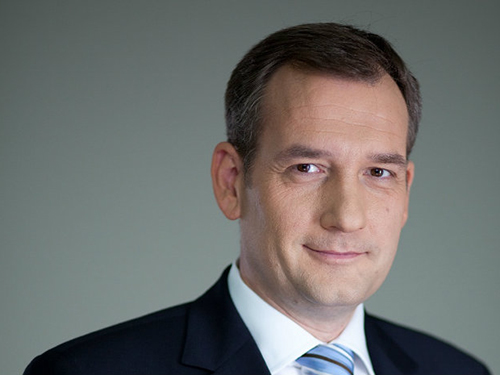

How do you see the global momentum in the sense of Serbia attracting foreign direct investments, situation in the region, trends?
The Reformist Government of the Republic of Serbia has a strong commitment to develop a stable and predictable business climate and to continue with the implementation of overarching reforms - fiscal consolidation aimed at reducing national debt, improvement of regional cooperation, investments into infrastructure and reform of the educational system. We have reached political and macroeconomic stability, which are the main prerequisites for attracting foreign investments and safety of foreign capital has been achieved.
Nevertheless, Serbia is a part of the global economy and in that sense it also experienced global economic trends such as the economic crisis and a down-flow of FDI in the Southeastern European region. From 2012 we are witnessing a constant annual growth in investors’ activity in Serbia, but we still haven’t reached the level before crises.
We are achieving constant decrease of unemployment and inflation and increase in export and GDP growth. Over the past year, the Government has improved the business climate by changing the Labor Law, Privatization and Bankruptcy Law, Planning and Construction Law and passed new and modern Law on Investments. As the EU is Serbia’s top foreign policy goal, each of these laws is aligned with relevant EU regulations.
These efforts have been recognized by international institutions - on the World Bank’s Doing Business List 2016, Serbia moved up by 32 places, and is now ranked 59th globally.
Which industrial sectors are in the focus when speaking about attracting foreign investments?
The most intensive is the automotive industry, the sector in which I have been working before I was appointed State Secretary. Today, we have more than 150 suppliers of the automotive industry - most of the leading American, European and Asian car brands have at least one part manufactured in Serbia.
Due to excellent agricultural land, the food and beverage procesing sector is second by number of investment projects. Serbia was the world’s No. 1 producer of raspberries in 2015 and is in an excellent position to cover both SEE, as well as the Russian market.
During the last decade, Serbia became the IT hot-spot of the region, with 1,600 innovative IT companies employing more than 14,000 engineers with an expertise in custom, high-end IT development, including software, hardware and solutions. We are proud of the fact that Microsoft opened its fourth development center in the world in Serbia.
Last but not the least, electronics is a strategic sector for Serbia. We have a long tradition stepped up by Siemens, Eaton, Panasonic, Gorenje and strong university centers in Belgrade, Nis and Novi Sad. This is an annual university pool of almost 250,000 students and 75,000 high school graduates, providing a great availability of high quality labor.
What is the strongest comparative advantage of Serbia compared to other countries in the region?
Manufacturing activity in Serbia has great possibilities to benefit from a unique set of free trade agreements enabling companies to export their products both to the US, EU, EFTA, CEFTA regions, Russia, Turkey and other countries without or with minimal import duties. Together, this creates a free trade market of 1.1 billion consumers for the „Made in Serbia“ products!
Also, to offset initial capital investments and ease the start-up of business endeavors, the Government of Serbia offers financial support for greenfield and brownfield projects in the manufacturing and services sectors going up to 50% of overall investment.
Investors can benefit from 14 free zones in Serbia, with an exemption from the VAT, customs and clearance. There are 220 multinational companies, employing more than 20,000 Serbian workers and having turnover of 5 billion Euros, which have already used these benefits.
According to EUROSTAT, Serbia has the lowest costs of electricity, gas, other fuels and landline telephony among 37 European states. Serbian cities are always on the Financial Times’ list of the Most Cost Effective Cities of the Future.
Which countries are the top sources of FDI?
Serbia has traditionally been focused on the EU market and the biggest number of investments come from EU countries. There is a decades-long commercial cooperation with a large number of foreign companies stemming from Western Europe, which consequently evolves to the natural outcome that those companies open their production facilities here in Serbia. Moreover, Serbian labor force is very technically skilled and informed about the latest technologies, which facilitates the adoption of new technological processes and makes them efficient and effective.
If we look at the number of individual investments, the top 10 foreign investors by country come from: Italy, Germany, Austria, Slovenia, USA, France, Greece, Switzerland, Israel, and Croatia. On the other hand, if we look at the total investment value by country, the list is somewhat different: Italy, USA, Austria, Greece, Norway, Germany, France, Russia, Belgium and Slovenia.
Can you explain RAS’s role?
As a newly established agency, RAS builds upon the knowledge of the former Serbian Investment and Export Promotion Agency (SIEPA) and National Agency for Regional Development (NARD) and brings improvements requried to meet the needs of a modern economy. RAS offers a wide range of services on behalf of the Government of the Republic of Serbia, including support of direct investments and export promotion, and leads the implementation of projects with the aim of improving Serbia’s competitiveness and reputation in order to support the economic and regional development.
In a single sentence, we will serve as a one-stop-shop for both domestic and international companies with a single goal of building a strong and sustainable economy, and increasing the quality of life for the people in Serbia.